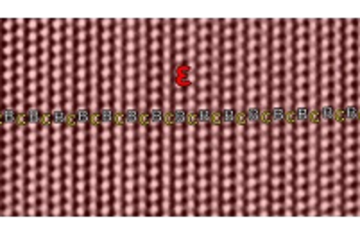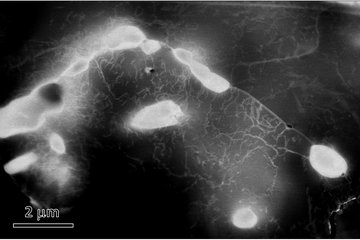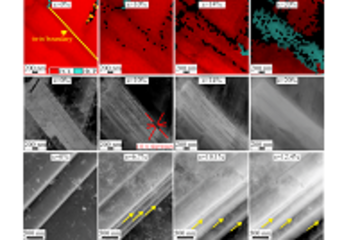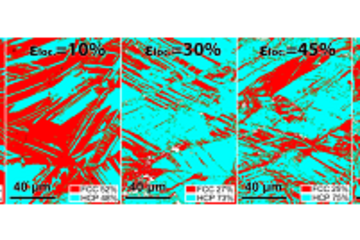All genres
1.
Journal Article
Spatially resolved high sensitive measurement of hydrogen permeation by scanning Kelvin probe microscopy. Electrochimica Acta 110, pp. 534 - 538 (2013)
2.
Journal Article
Hydrogen detection in metals: A review and introduction of a Kelvin probe approach. Science and Technology of Advanced Materials 14 (1), 014201 (2013)
3.
Journal Article
Combined high resolution scanning Kelvin probe - Scanning electrochemical microscopy investigations for the visualization of local corrosion processes. Electrochimica Acta 82, pp. 339 - 348 (2012)
4.
Journal Article
In-situ detection of differences in the electrochemical activity of Al2Cu IMPs and investigation of their effect on FFC by scanning Kelvin probe force microscopy. Corrosion Science 58, pp. 307 - 314 (2012)
5.
Journal Article
SECM and SKPFM studies of the local corrosion mechanism of Al alloys-A pathway to an integrated SKP-SECM system. Electroanalysis 24 (2), pp. 239 - 245 (2012)
6.
Journal Article
Scanning Kelvin Probe as a highly sensitive tool for detecting hydrogen permeation with high local resolution. Electrochemistry Communucations 13 (12), pp. 1542 - 1545 (2011)
7.
Journal Article
Scanning Kelvin probe force microscopy for the in situ observation of the direct interaction between active head and intermetallic particles in filiform corrosion on aluminium alloy. Electrochimica Acta 56 (26), pp. 9588 - 9595 (2011)
8.
Talk
Using Scanning Kelvin Probe Force Microscopy and Thermal Desorption for Localized Hydrogen Detection and Quantification in Steels. 2nd International Conference on hydrogen in Steels, Gent, Belgium (2014)
9.
Talk
Investigation of the Interaction between H2 and trap sites in Duplex Steel by Scanning Kelvin Probe Force Microscopy. 63rd Annual Meeting of the International Society of Electrochemistry, Prague, Czech Republic (2012)
10.
Talk
Kelvin Force Microscopy Investigation on Hydrogen Permeation in Palladium. Nanomeasure 2010, Krakow,Poland (2010)
11.
Talk
High Resolution Study of Hydrogen Permeation through Metals by Scanning Kelvin Probe Force Microscopy. 217th ECS Meeting, Vancouver, Canada (2010)
12.
Talk
Chasing Filigrees under Coated Aluminium Alloys. Electrochem09, incorporating the 50th Corrosion Science Symposium, Manchester, UK (2009)
13.
Poster
Application of Atomic Force Microscopy in its Kelvin Probe Mode (SKPFM) over Filiform Corrosion of Aluminum Alloys. Workshop on Scanning Probe Microscopies and Organic Materials XVII, Bremen, Germany (2009)
14.
Poster
Microstructural and Surface Potential Study of Al–4 wt% Cu–Mg (DURAL) Alloy. ICAA 11, 11th International Conference on Aluminium Alloys, Aachen, Germany (2008)
15.
Thesis - PhD
High resolution investigation of localized corrosion by in-situ SKPFM. Dissertation, Fakultät für Maschinenbau der Ruhr-Universität Bochum, Bochum, Germany (2011)











